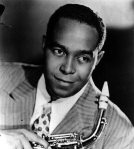At the heart of jazz lies improvisation: the spontaneous creation of musical material, usually based on a pre-defined series of chords ‘borrowed’ from a tune. (I’m not counting free jazz, which operates differently). ‘Rhythm Changes’ is a jazz musician’s shorthand for a set of chords, originally from Gershwin’s I Got Rhythm, that has been used for many other tunes, and was the basis of many compositions in the Bebop period.
Listening to jazz, it seems to me – especially to improvisation – involves a two-tier listening system. In order to appreciate exactly what the soloist is doing, how creative they are being, how inventive they are being with the material, the listener needs to follow the improvisation in relation to the chord sequence being used.
People often lament the incomprehensibility of jazz: ‘I don’t understand it, it makes no sense, it’s just noise.’ One way of breaking through this seeming lack of sense in jazz is to follow the chain of chords being used whilst the improvisation is unfolding: mapping the solo onto the harmonic framework. In this manner, the listener can see where the soloist is, and by working through the underlying chord sequence at the same time as the soloist, appreciate what’s going on.
 Following the rhythmic pattern, the number of beats in the bar, also helps; you can understand the rhythmic impulse behind the improvised phrases, sense why the player finished the phrase where they did. Indian musicians do this: the rhythmic cycle, known as the tal, is a defined number of beats – including five, eleven, sixteen – and the improvised section of the piece, known as the jhala, sees the musicians working through the cycle of beats always to finish on the first beat. Audiences follow this rhythmic cycle during the improvisation, and show their appreciation when the soloist finishes in the right place.
Following the rhythmic pattern, the number of beats in the bar, also helps; you can understand the rhythmic impulse behind the improvised phrases, sense why the player finished the phrase where they did. Indian musicians do this: the rhythmic cycle, known as the tal, is a defined number of beats – including five, eleven, sixteen – and the improvised section of the piece, known as the jhala, sees the musicians working through the cycle of beats always to finish on the first beat. Audiences follow this rhythmic cycle during the improvisation, and show their appreciation when the soloist finishes in the right place.
The two-tier system of listening to a jazz piece means following both solo improvisation and the combined harmonic and rhythmic sequence underneath it. You can then hear when the improvisation is extending the chord to embrace added notes, or follow the structure of the piece to know whether you’re hearing the verse or the chorus.
I realise this presupposes some understanding of music theory in the listener, which is not always the case. It’s up to you what clues you follow, what structures or relationships, to help you make sense of what’s going on. But even counting the beats helps: the hi-hat on beats two and four in swing 4/4 time, the bass-drum falling on the first beat in swing 3/4 time, or the rim-shot on the last beat of the bar in a piece like Milestones.
It’s all about making sense of the material, and following what the soloist is doing with them. Simply letting the music wash over you without listening actively can leave you feeling lost, adrift. Working through the changes with the player will help you navigate the often choppy waters of jazz.
Filed under: Jazz | Tagged: Gershwin, jazz | Leave a comment »



